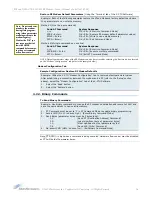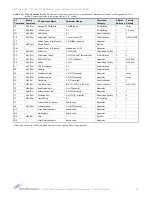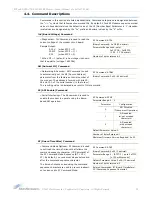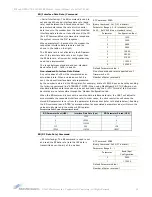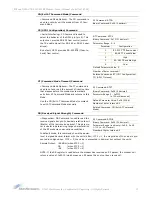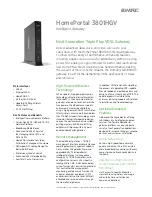
9XTend
‐
NEMA™
RS
‐
232/485
RF
Modem
–
Product
Manual
v2.x4x
[2007.01.04]
©
2007
MaxStream,
Inc.,
Confidential
&
Proprietary
‐
All
Rights
Reserved
17
3.2. Modes of Operation
XTend RF Modems operate in five modes.
Figure
3
‐
03. Modes
of
Operation
3.2.1. Idle Mode
When not receiving or transmitting data, the RF modem is in Idle Mode. The modem shifts into the
other modes of operation under the following conditions:
• Transmit Mode (Serial data is received in the DI Buffer)
• Receive Mode (Valid RF data is received through the antenna)
• Sleep Mode (Sleep Mode condition is met)
• Command Mode (Command Mode Sequence is issued)
3.2.2. Transmit Mode
When the first byte of serial data is received from the UART in the DI buffer, the modem attempts
to shift to Transmit Mode and initiate an RF connection with other modems. After transmission is
complete, the modem returns to Idle Mode.
RF transmission begins after either of the following criteria is met:
Figure
3
‐
04. Transmit
Mode
Data
Flow
The character timeout trigger can be
disabled by setting RO to zero. In this
case, transmission will not begin until
RB bytes have been received and are
pending for RF transmission. The RB
parameter may be set to any value
between 1 and the RF packet size [refer
to PK (Max RF Packet Size) parameter],
inclusive. Note that transition to Trans-
mit Mode cannot take place during RF
reception; the RF reception must com-
plete before the radio can transition into
Transmit Mode.
If RB or RO conditions are met, the
modem initializes a communications channel. Serial data in the DI buffer is grouped into RF pack-
ets (up to 2048 bytes in each packet, refer to PK Command), converted to RF data and is transmit-
ted over-the-air until the DI buffer is empty.
1.
RB bytes have been received by the UART and are pending for RF transmission.
[Refer to the RB (Packetization Threshold) Command]
2.
At least one character has been received by the UART and is pending for RF transmission;
and RO character times of silence been observed on the UART.
[Refer to the RO (Packetization Timeout) Command]
























